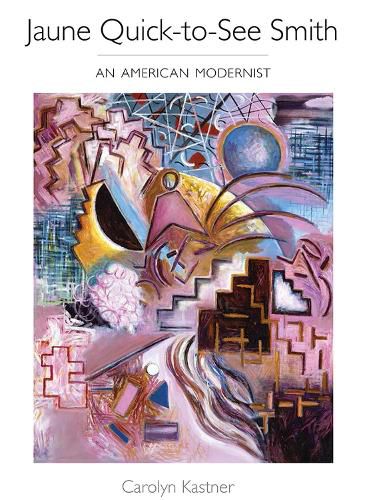Readings Newsletter
Become a Readings Member to make your shopping experience even easier.
Sign in or sign up for free!
You’re not far away from qualifying for FREE standard shipping within Australia
You’ve qualified for FREE standard shipping within Australia
The cart is loading…






The first full-length critical analysis of the paintings of Jaune Quick-to-See Smith, this book focuses on Smith's role as a modernist in addition to her status as a well-known Native American artist. With close readings of Smith's work, Carolyn Kastner shows how Smith simultaneously contributes to and critiques American art and its history.Smith has distinguished herself as a modernist both in her pursuit of abstraction and her expressive technique, but too often her identity as a Native American artist has overshadowed these aspects of her work. Addressing specific themes in Smith's career, Kastner situates Smith within specific historical and cultural moments of American art, comparing her work to the abstractions of Kandinsky and Miro, as well as to the pop art of Rauschenberg and Johns. She discusses Smith's appropriation of pop culture icons like the Barbie doll, reimagined by the artist as Barbie Plenty Horses. As Kastner considers how Smith constructs each new series of artworks within the artistic, social, and political discourse of its time, she defines her contribution to American modernism and its history. Discussing the ways in which Smith draws upon her cultural heritage--both Native and non-Native--Kastner demonstrates how Smith has expanded the definitions of "American" and "modernist" art.
$9.00 standard shipping within Australia
FREE standard shipping within Australia for orders over $100.00
Express & International shipping calculated at checkout
The first full-length critical analysis of the paintings of Jaune Quick-to-See Smith, this book focuses on Smith's role as a modernist in addition to her status as a well-known Native American artist. With close readings of Smith's work, Carolyn Kastner shows how Smith simultaneously contributes to and critiques American art and its history.Smith has distinguished herself as a modernist both in her pursuit of abstraction and her expressive technique, but too often her identity as a Native American artist has overshadowed these aspects of her work. Addressing specific themes in Smith's career, Kastner situates Smith within specific historical and cultural moments of American art, comparing her work to the abstractions of Kandinsky and Miro, as well as to the pop art of Rauschenberg and Johns. She discusses Smith's appropriation of pop culture icons like the Barbie doll, reimagined by the artist as Barbie Plenty Horses. As Kastner considers how Smith constructs each new series of artworks within the artistic, social, and political discourse of its time, she defines her contribution to American modernism and its history. Discussing the ways in which Smith draws upon her cultural heritage--both Native and non-Native--Kastner demonstrates how Smith has expanded the definitions of "American" and "modernist" art.